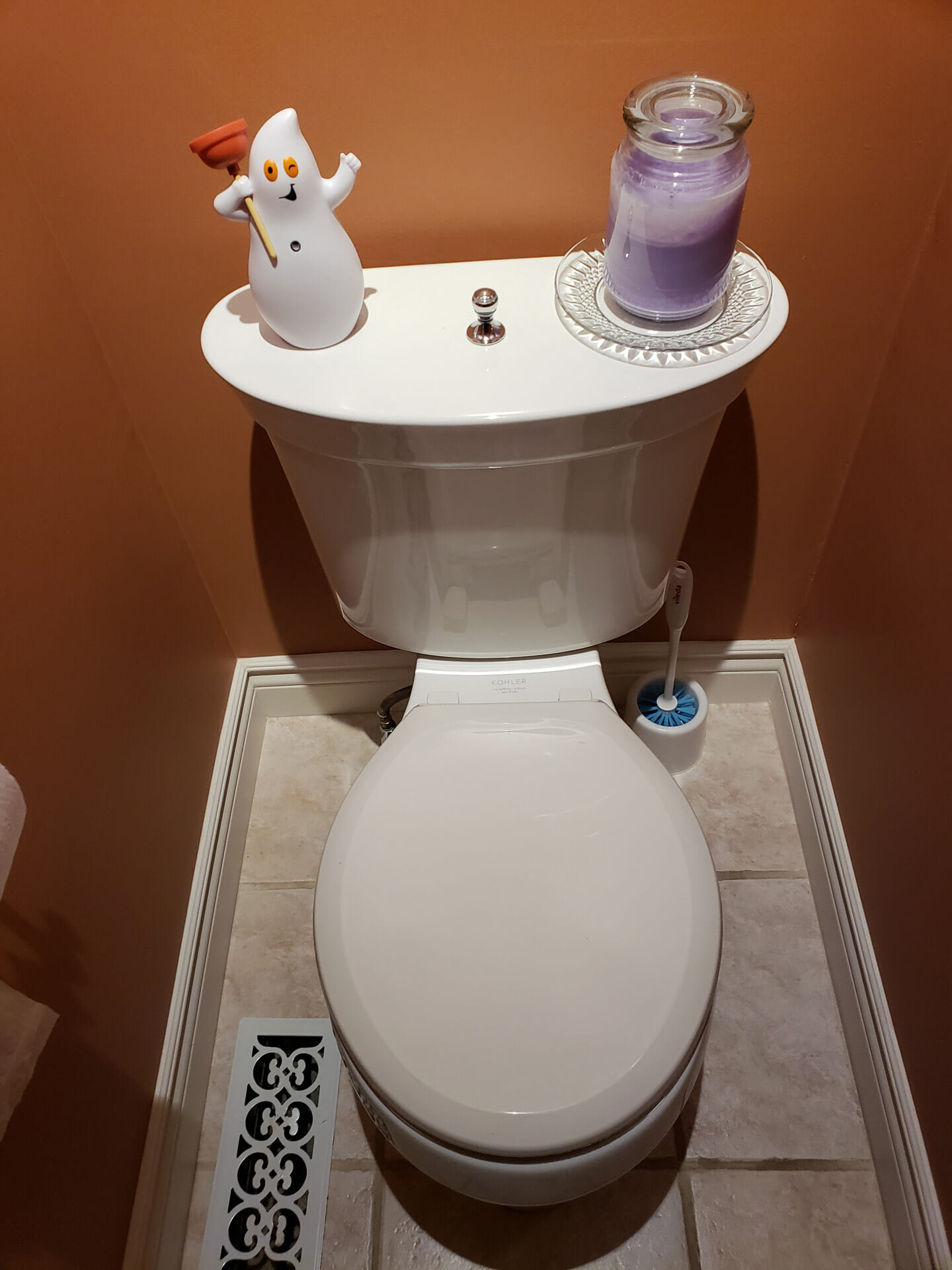A crack in your toilet tank might not seem like a big deal, but it quickly turns into a big one if left unchecked.
Cracked toilet tanks can leak, which can lead to significant water damage over time if not repaired. So read on if you need to figure out how to fix a cracked toilet tank or bowl.
Page Contents (Click Icon To Open/Close)
How to Fix Cracked Toilets
Required Supplies
- 1The very first thing you should do is turn off the water supply to the toilet. Even if there is no actual water leaking, it is still a good idea to turn the water off in case something goes wrong.
- 2Next, flush the tank to remove any excess water and mop up any remaining water in the bowl and tank with some towels or sponges. You do not have to remove absolutely all water; you just don't want any large standing quantities of it.
- 3Next, identify the cracks in the tank or bowl. Apply the epoxy putty to the area according to the instructions. Proper caulking technique involves filling an inch above the crack and working your way down.
- 4Afterward, use the putty knife to smooth the sealant out. Spread it so it’s even and there are not any large lumps.
- 5Next, you need to let the epoxy dry. Most of the time, epoxy will dry in about 24 hours or so. Once you wait 24 hours and do not find any other cracks, you can refill the tank with water.
- 6Once the tank is filled with water, test out the flush to see if the leaks are fully plugged. You may also want to step away for a few hours to see if there is any water leaking out onto the floor.

What Causes a Toilet to Crack?
Toilet cracks can be caused by many things, but most commonly are a result of:
- 1Extreme Temperature
- 2Aging
- 3Impacts Or Accidents
The most common reason a toilet tank cracks is due to wear and tear from ageing. A modern toilet can last up to 50 years if maintained properly, but it will stick chip and crack from age over time. Impacts with other hard objects like cabinets can also cause cracks in the toilet tank material.

How to Find Cracks in Toilet Bowls
The easiest way to identify whether your toilet has a crack in it is the presence of pools of water on the floor near the toilet.
Another symptom of a crack in the toilet bowl could be missing water from the tank or bowl. If you notice that water seems to disappear, then there might be a crack in the bowl.
How to Find Cracks in Toilet Tanks
How to Tell if Your Toilet Bowl is Beyond Fixing?
If cracks are small enough, then they should not be too difficult to fix, and they should not greatly affect toilet performance. The larger a crack is, the harder it will be to repair and seal with epoxy.
Basically, if the crack is more than a hairline crack and you can see into the layers of the material, then the tank is probably too far gone to repair. A good rule of thumb is that cracks wider than 1/16” probably cannot be fixed.
FAQs
Can you fix porcelain toilets?
You can seal hairline cracks in a porcelain toilet with epoxy putty or some other kind of sealant.
How many years should a toilet last?
A good-quality toilet can last up to 50 years if taken care of properly, but realistically, a toilet will last around 10-15 years.
Can you replace just the tank of a toilet?
It depends on the kind of toilet. Some let you disconnect the tank from the bowl, and others do not. If you can disconnect the tank, then you can often replace just that part.
How much should it cost to replace a toilet?
It depends on the severity of the damage, but it can cost anywhere between $50-$300 to fix a toilet.
Can Flex Seal fix a cracked toilet tank?
Yes, Flex Seal can be used to fix cracks around a toilet tank and bowl if they are just small hairline fractures. It will not be able to fix larger cracks.
What do you do with old toilets?
You can throw it away in the dumpster, or you can donate it to a charity organization so they can restore and reuse it.
Conclusion
Toilet tanks and bowls are extremely important, so you need to take care of cracks before they develop into a larger problem.
Thankfully, small cracks on all kinds of toilets are easy to fix yourself. Larger cracks might require the help of a professional.

Ian Haynes is an expert writer who has successfully deployed over 500 plumbing pages and other related content. He has an excellent understanding of home plumbing issues and translates his experiences via Plumbing Lab so readers can have a better understanding of common household problems. Outside of his work, Ian likes exploring Brooklyn with his Labrador.
